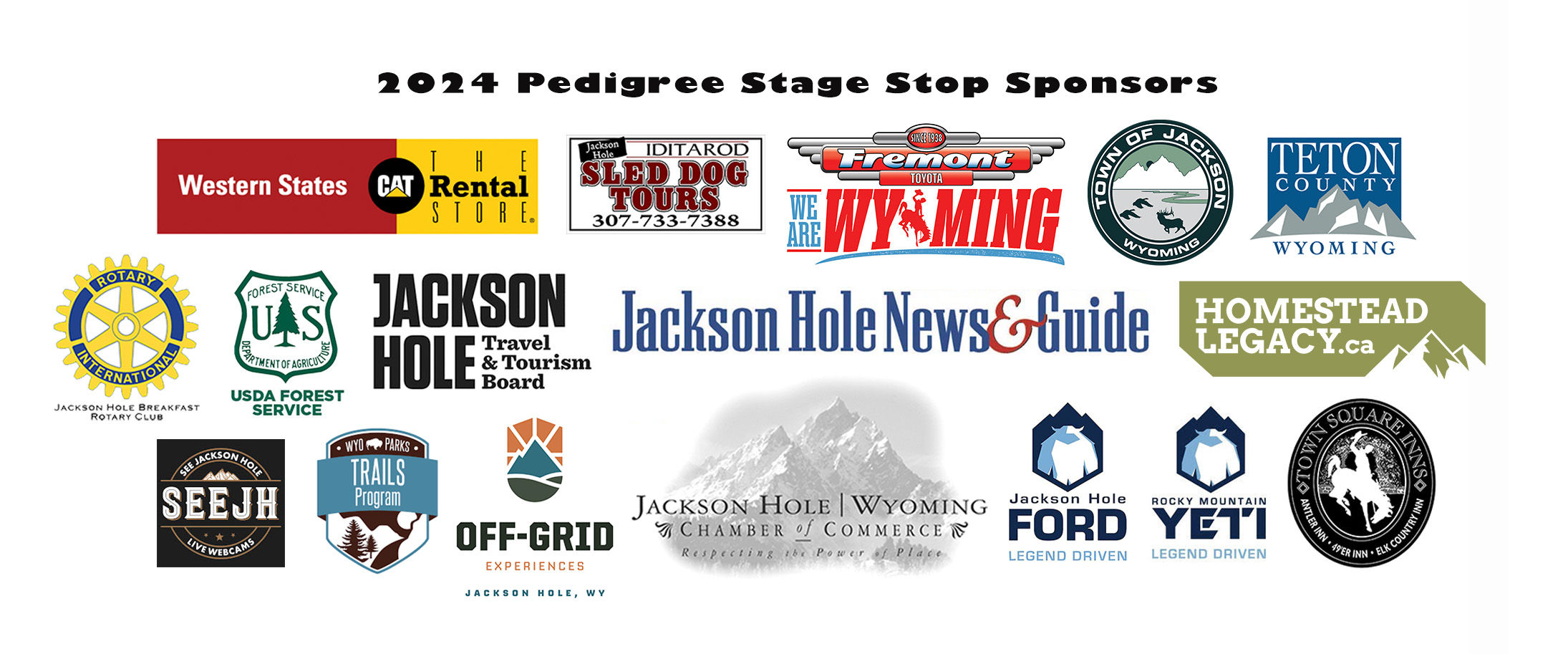Commentary by Jerry Bath
With the new changes in race format for 2019’s Pedigree Stage Stop Race being a definite factor in the amount of new interest and increased participation by mushers, and with less than half the field being veterans to the Stage Stop, we are entering into a new era.
With most of the newcomers being used to three-day races at best, will they be able to be competitive for the entire eight stages? Also with the increased MPH for the shorter distance will the veteran finishers be able to hold on? Or will this really make any difference at all? It will in the type of training and should definitely be easier to train for than before, being an early-season race.
The changes include going form 12 to 10 dogs per day maximum and going from 16 to 14 dogs allowed in the pool along with all the stages only being 30 to 35 miles. So how will this change things up? The pool is the number of dogs allowed on one team’s roster. They are pre-selected and microchipped at the vet check before the race starts.
One might say that they will only be running 10 dogs instead of 12. Well, that’s not always been the case as the average over the past few years has been 10 or 11 dogs per day with the pervious 45-58 mile stages. Sure the distances will be less now, but so is the pool of dogs, which means a slightly greater percentage of dogs getting less time off. Previously in the 16-dog pool you might have chosen a dog that was great for one or two days at a time then requiring a few days off. This year that same dog might be left at home, making it even more of a balancing act in learning how to run an 8-day event. I say “learning” because I don’t care how many times you have run the Pedigree Stage Stop Race — you’re ALWAYS learning!
True team management and really using your pool to the dogs’ advantage (which, by the way, is exactly what the pool was designed for: To be extremely dog-friendly) will be more important than ever. It’s a proven fact that the pool is all about the dogs and not about going faster. Coming from experience it potentially makes a smaller kennel more competitive against a much larger one because you don’t have to have 14 everyday dogs.
Certainly they will be going faster than in past years, but how much faster is the question. Last year we had a bit of a test run with the shorter distances with the Lander and Teton County stages being 30 and 32 miles. Lina Streeper won the 30-mile Lander leg in 2018 at 14.7 MPH. Bruce Magnusson won the 32-mile Teton County leg in 2018 at 14.8 MPH.
Now, take into account what had transpired before these last half of the race stages took place. Also recognize that they were trained for 45-58 mile stages.
PREDICTIONS
Will a 15-MPH average be too fast? I think not. Will a 15-MPH average keep you out of the running for the top spot? Yes and no. Let’s take it leg by leg. I could very well be all wet and the winner might average 16+ some days so l will go out on a limb here. After seeing the teams run for two days then I’ll get a better feel for it. Also huge unpredictable factors are the weather, terrain, and trail surfaces dictating a lot of the action.
Alpine 15.8
Pinedale 15.2
Kemmerer 14.4.
Big Piney/ Marbleton 14.3.
Lander 15.
Driggs 14.2
Teton County 15.4
I would imagine the gauge will be set by day three. Whether it will hold? We’ll have to wait and see.
Will some teams go out at too fast a pace the first few days and not be able to hold on, resulting in scratching or falling way back in the pack in hopes of finishing?
OR
Will some hold back too much and not be able to play catch-up?
This is where the race gets really exciting. The top 10 after day 3 very well might not be the same after day 5. The musher that just runs his or her own race will prevail.
So, come on out to at least one town’s stage of the race and see these exciting, world-class dog teams show their stuff. It’s going to be EPIC!
